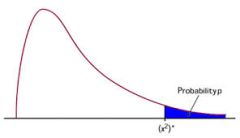Total Probability Rule Calculator
Instructions: Use this step-by-step Total Probability Rules calculator to compute the probability of an event \(A\), when you know the conditional probabilities of \(A\) with respect to a partition of events \(B_i\). Please type in the conditional probabilities of A with respect to the other events, and optionally, indicate the name of the conditioning events in the form below:
More About the Law of Total Probability
The Law of Total Probability is one of the most important theorems in basic Probability theory. It is a result that gives a clear link of how the probability of an event \(A\) is composed of these parts based on conditional events that form up the "total" of the probability of the event \(A\).
Now, in mathematical terms, let \(\left\{B\right\}_{i=1}^n\) be a partition of the sample space, and let \(A\) be an event. Then, the probability of the event A can be partitioned in the following way.
\[\Pr(A) = \Pr(A | B_1) \Pr(B_1) + \Pr(A | B_2) \Pr(B_2) + ... + \Pr(A | B_n) \Pr(B_n)\]The Total Probability Rule is a pivotal theorem in Probability and Statistics, and it is the foundation of other crucial theorems such as the Theorem of Bayes .



